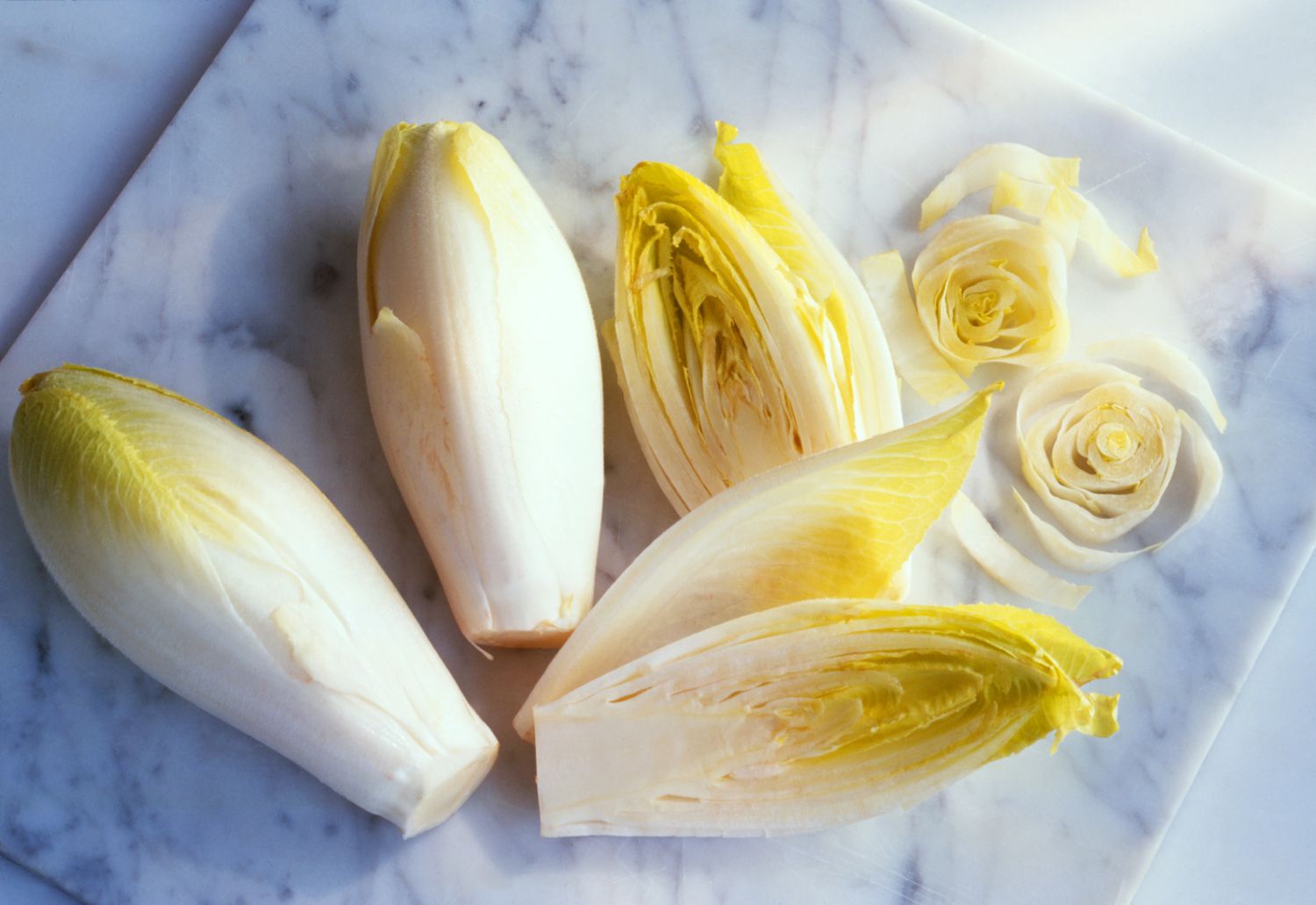
Endive might not be the first vegetable that comes to mind, but it's packed with surprises. This leafy green, often mistaken for lettuce, boasts a slightly bitter taste and a crunchy texture. It's a favorite in salads, soups, and even grilled dishes. But what makes endive truly special? Endive is not just a tasty addition to your meals; it's also a powerhouse of nutrients. Rich in vitamins A, C, and K, it supports eye health, boosts immunity, and aids in blood clotting. Plus, it's low in calories, making it a great choice for those watching their weight. Ready to learn more? Let's dive into 25 fascinating facts about this underrated veggie!
Key Takeaways:
- Endive, a leafy green vegetable, is low in calories and high in fiber, making it a healthy addition to your diet. It also supports heart and bone health, and is rich in vitamins and minerals.
- Endive, also known as "white gold," has a rich history and is popular in Belgium and France. It can be used in floral arrangements and symbolizes prosperity in some cultures.
What is Endive?
Endive, a leafy green vegetable, often finds its way into salads and gourmet dishes. Its slightly bitter taste and crisp texture make it a unique addition to many recipes. Here are some intriguing facts about this versatile vegetable.
-
Endive belongs to the chicory family. This family also includes radicchio, escarole, and Belgian endive.
-
There are two main types of endive. Curly endive (also known as frisée) and Belgian endive are the most common varieties.
-
Endive is a cool-weather crop. It thrives in temperatures between 45°F and 75°F.
-
Belgian endive is grown in the dark. This method prevents the leaves from turning green and becoming bitter.
-
Endive is low in calories. One cup of chopped endive contains only about 8 calories.
Nutritional Benefits of Endive
Endive isn't just tasty; it's also packed with nutrients. Adding it to your diet can offer several health benefits.
-
Rich in vitamins and minerals. Endive provides vitamins A, C, K, and folate, as well as minerals like calcium and potassium.
-
High in fiber. This helps with digestion and can keep you feeling full longer.
-
Contains antioxidants. These compounds help protect your cells from damage.
-
Supports heart health. The fiber, potassium, and folate in endive contribute to cardiovascular health.
-
Good for bone health. Vitamin K in endive plays a crucial role in bone metabolism.
Culinary Uses of Endive
Endive's unique flavor and texture make it a favorite in many kitchens. Here are some ways to use it in your cooking.
-
Great in salads. Its crisp texture adds a delightful crunch.
-
Can be grilled or roasted. Cooking endive can mellow its bitterness and bring out a sweeter flavor.
-
Used as a scoop for dips. The sturdy leaves make perfect edible spoons for appetizers.
-
Pairs well with cheese and nuts. The bitterness of endive complements the richness of cheese and the crunch of nuts.
-
Common in French cuisine. Endive is a staple in many traditional French dishes.
Growing Endive at Home
If you have a green thumb, you might want to try growing endive in your garden. It's not too difficult if you follow these tips.
-
Start with seeds or seedlings. Both methods can be successful, but seeds are more economical.
-
Plant in well-drained soil. Endive prefers soil that doesn't stay too wet.
-
Keep the soil moist. Regular watering is essential, especially during dry spells.
-
Harvest before it bolts. Once the weather gets too warm, endive can become bitter and tough.
-
Can be grown indoors. With the right conditions, you can grow endive in containers inside your home.
Fun Facts About Endive
Endive has a rich history and some surprising characteristics. Here are a few fun facts to impress your friends.
-
Endive was discovered by accident. Belgian endive was first cultivated in the 1830s when a farmer left chicory roots in his cellar.
-
Endive is sometimes called "white gold." This nickname comes from its pale color and high value in European markets.
-
Popular in Belgium and France. These countries are the largest producers and consumers of endive.
-
Endive can be used in floral arrangements. Its unique shape and color make it an interesting addition to bouquets.
-
Endive is a symbol of prosperity. In some cultures, it represents wealth and abundance due to its luxurious appearance and taste.
Endive: A Crunchy Powerhouse
Endive isn't just a leafy green; it's a nutritional powerhouse. Packed with vitamins A and K, it supports eye health and bone strength. Its fiber content aids digestion, while antioxidants help fight inflammation. This versatile veggie can be enjoyed raw in salads or cooked in various dishes, adding a delightful crunch and slightly bitter flavor.
Including endive in your diet can boost overall health. Its low-calorie count makes it perfect for weight management. Plus, the high water content keeps you hydrated. Whether you're a seasoned chef or a kitchen newbie, endive is easy to incorporate into meals.
So next time you're at the grocery store, grab some endive. Your body will thank you for the extra nutrients and delicious taste. Happy eating!
Frequently Asked Questions
Was this page helpful?
Our commitment to delivering trustworthy and engaging content is at the heart of what we do. Each fact on our site is contributed by real users like you, bringing a wealth of diverse insights and information. To ensure the highest standards of accuracy and reliability, our dedicated editors meticulously review each submission. This process guarantees that the facts we share are not only fascinating but also credible. Trust in our commitment to quality and authenticity as you explore and learn with us.


